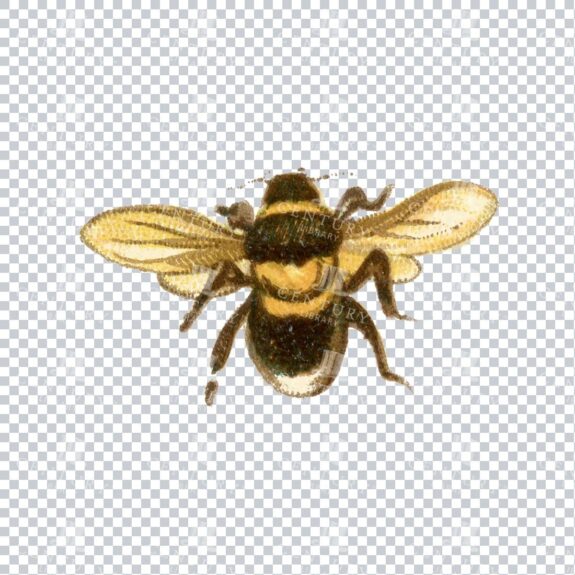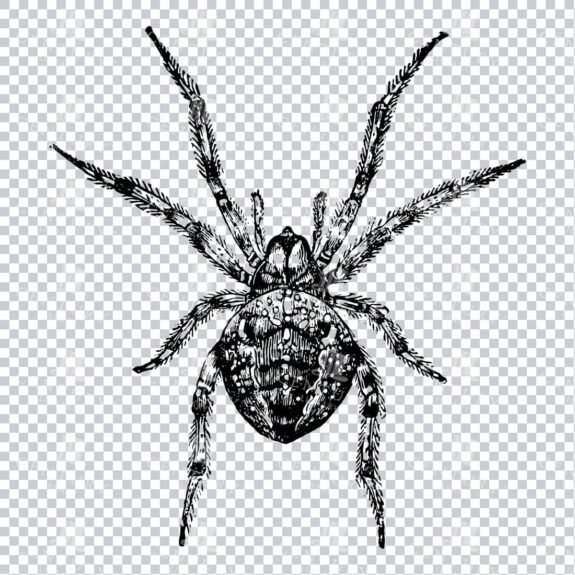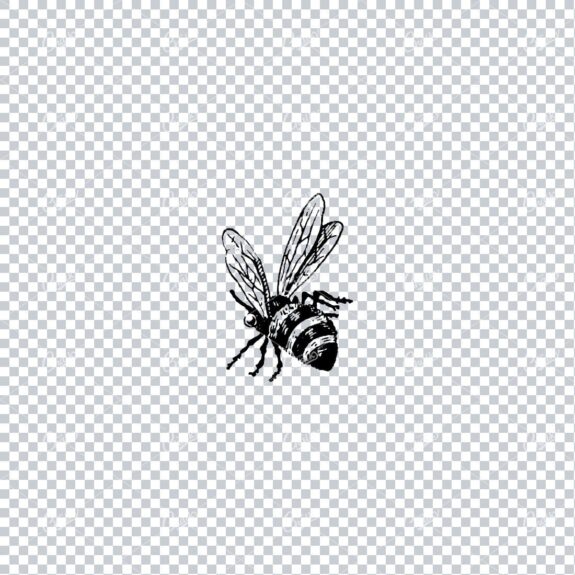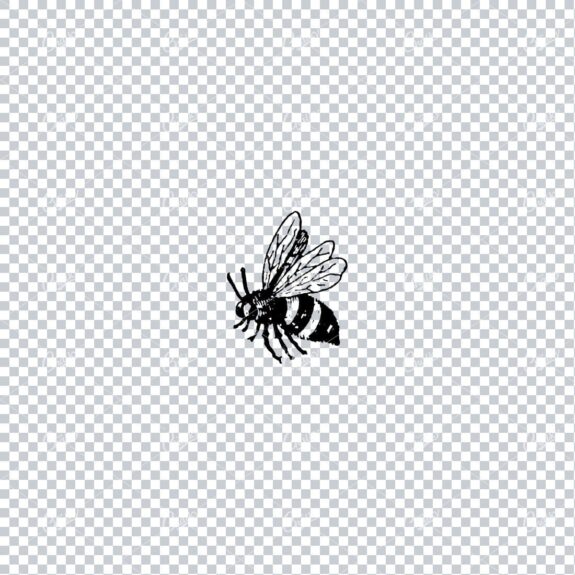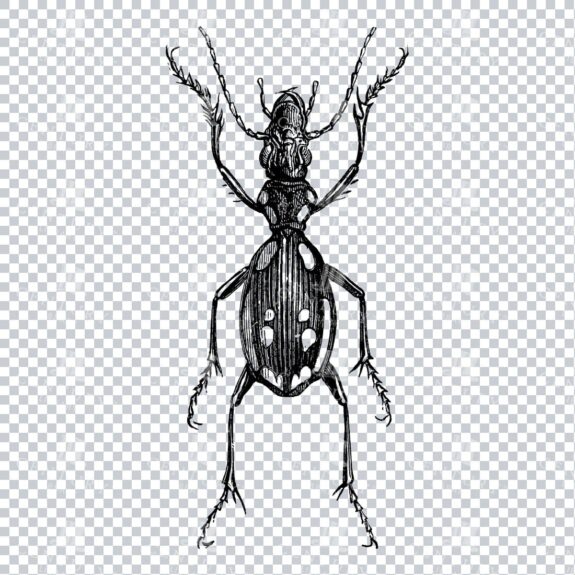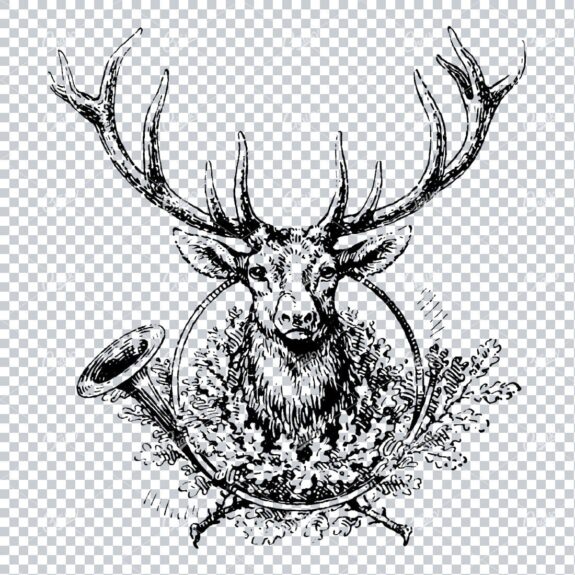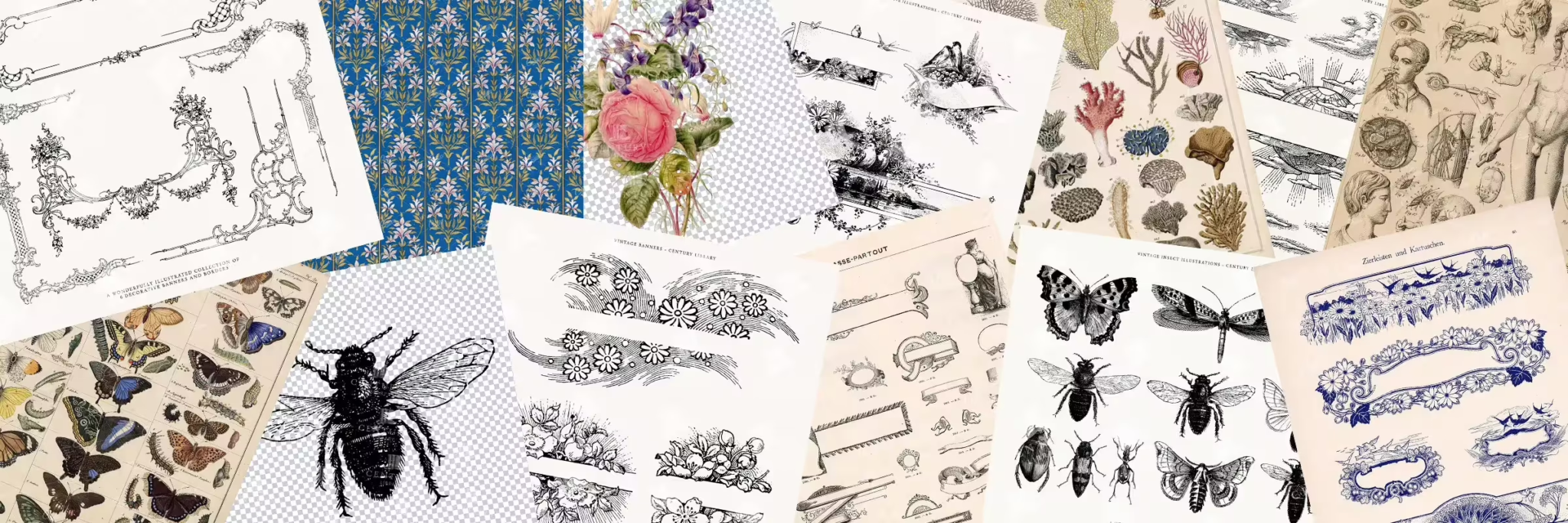
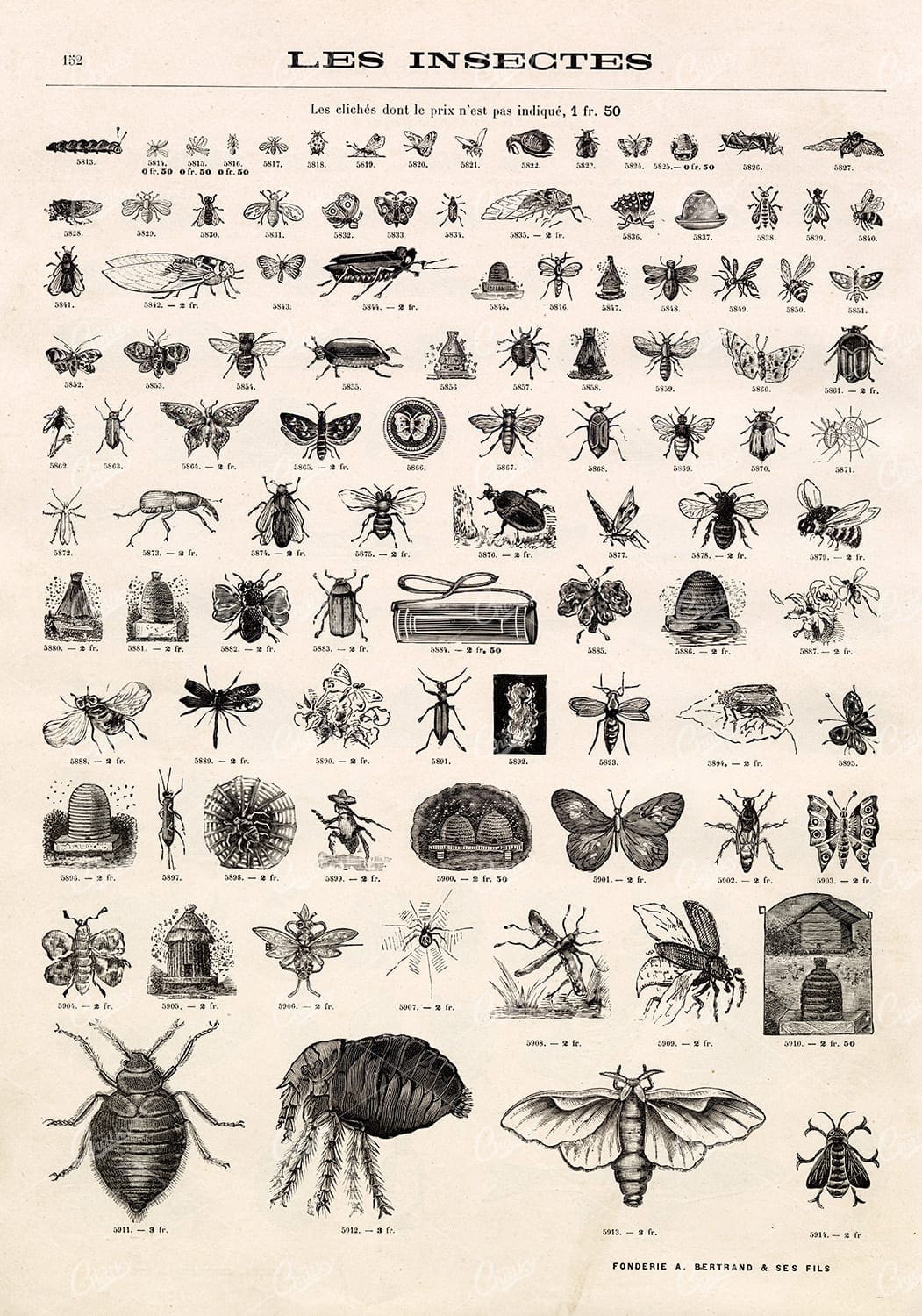

VIGNETTE Insect Illustrations – Vintage Stock Artwork
The type foundry and print shop of old would create books, like the one this image was discovered within, to help customers and clients with their design choices. Naturally, these books were jam packed with useful illustrative elements that could be combined to create a final piece. Today, these books are extremely difficult to get a hold of. Especially those that were published in the late 1800s. They were not mainstream publications, they simply served as 'catalogs' and thus were only produced in small numbers. Fortunately, we were introduced to a collector who had precisely what we had been searching for for so long. After some costly negotiations, we're very excited to be able to share the wonderful gems within.
- License Info
- Resolution: 8996 x 12688
- Year of Print: Late 1800s
- Artist: A Bertrand
From this collection
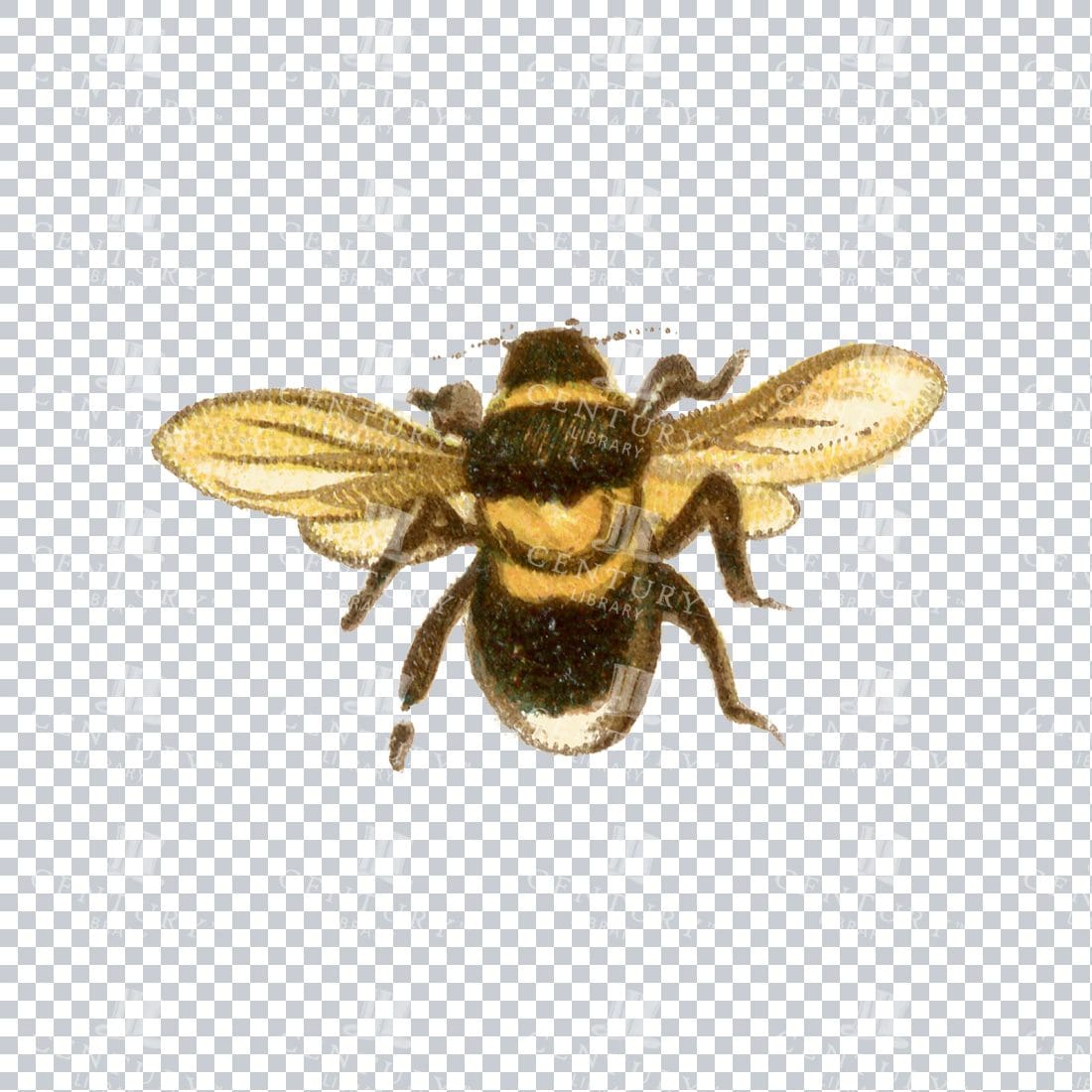


Engraved Spider Web Scene with Loft Window, Wooden Beams, and Dramatic Shadows
This image is part of a beautiful collection of highly detailed, engraved illustrations from the early 1800s - Originally discovered within a small book full of stories inspired by the English countryside. While I’m sure the stories are lovely, I couldn’t get over how incredible these illustrations were!
- Image Type(s): PNG
From this collection
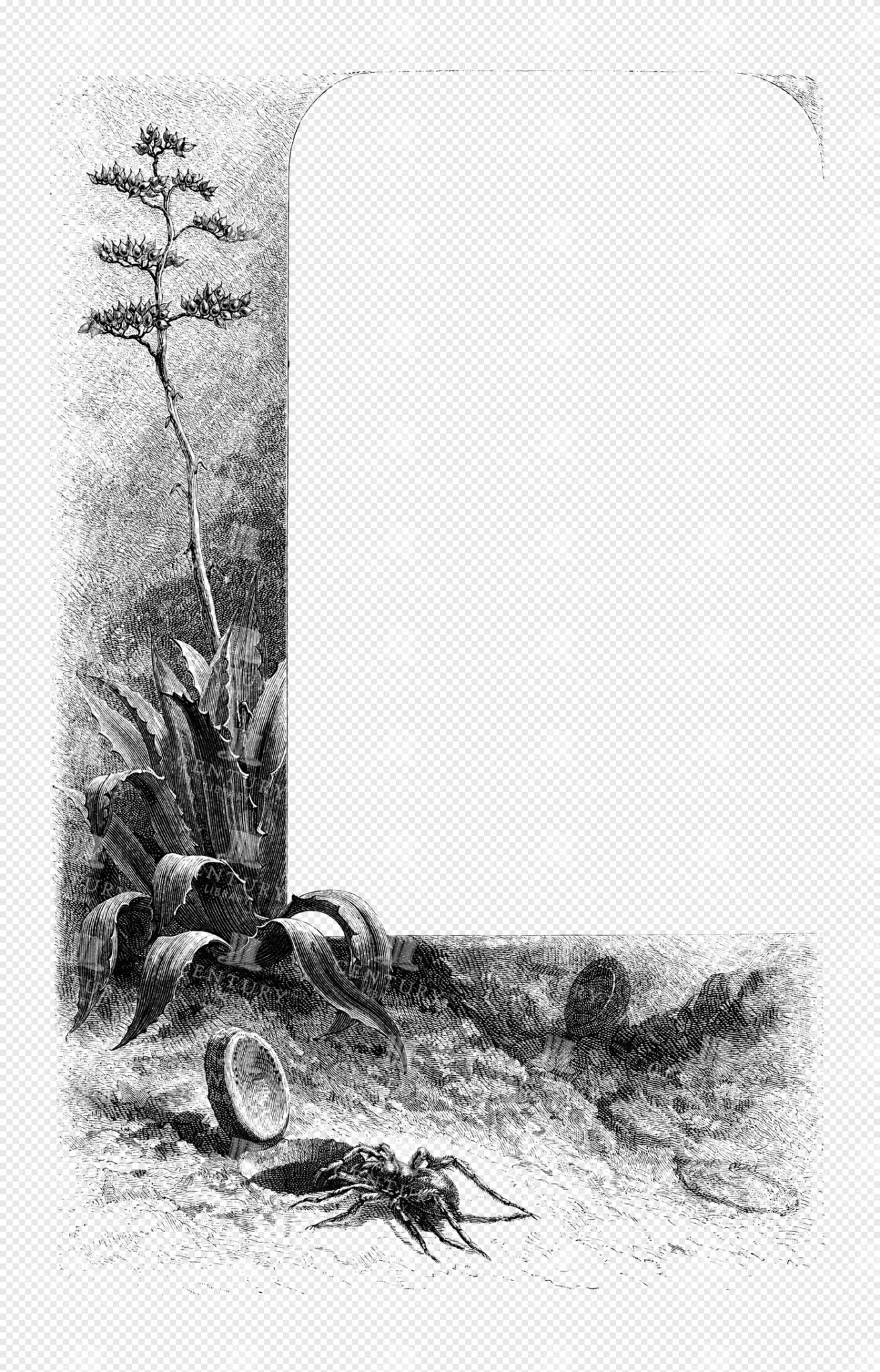

Engraved Botanical Illustration with Agave Plant, Flowering Stalk, Spider, and Frame
This image is part of a beautiful collection of highly detailed, engraved illustrations from the early 1800s - Originally discovered within a small book full of stories inspired by the English countryside. While I’m sure the stories are lovely, I couldn’t get over how incredible these illustrations were!
- Image Type(s): PNG
From this collection
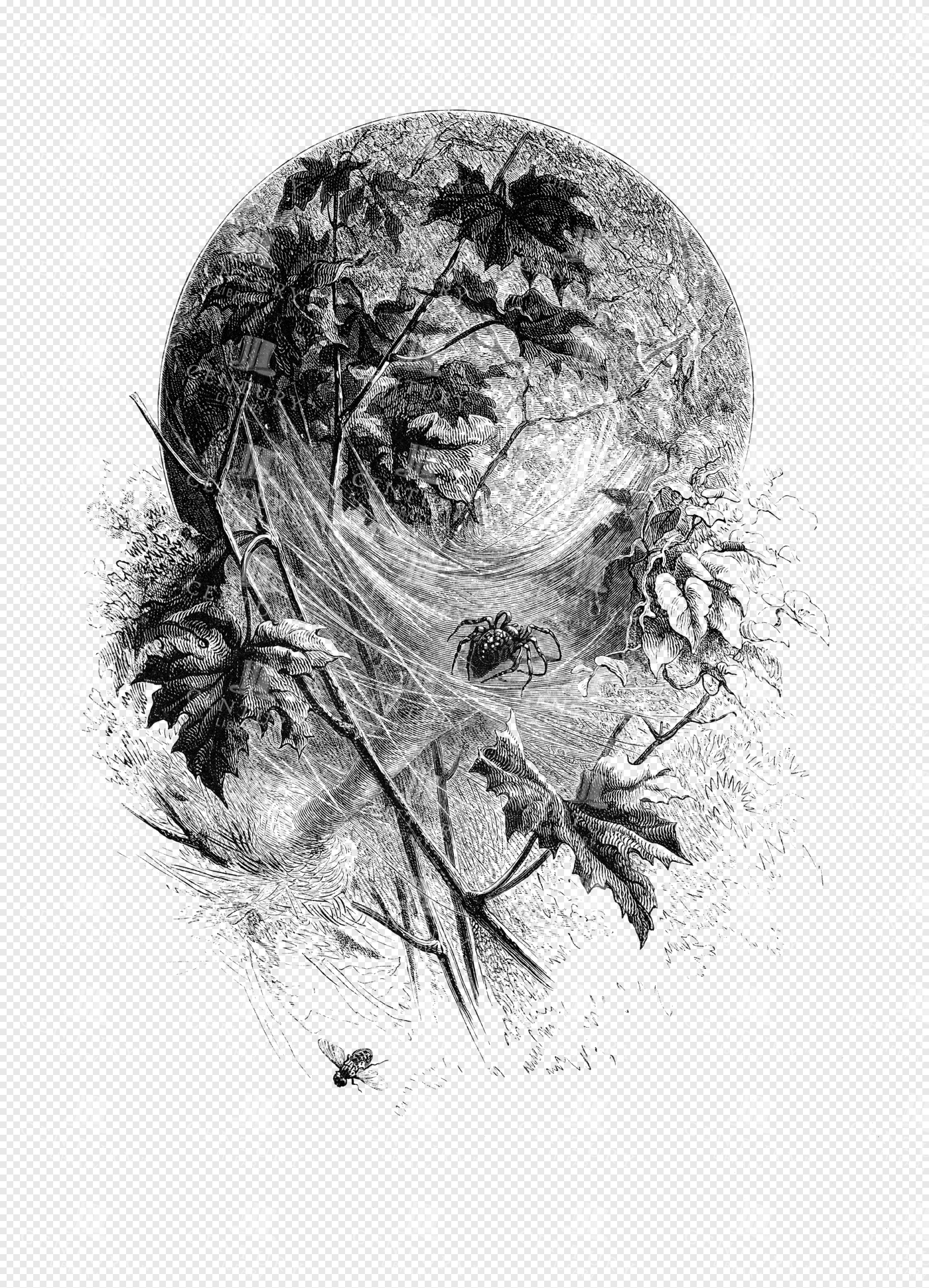

Engraved Spider Web in Leafy Forest Scene with Intricate Botanical Details
This image is part of a beautiful collection of highly detailed, engraved illustrations from the early 1800s - Originally discovered within a small book full of stories inspired by the English countryside. While I’m sure the stories are lovely, I couldn’t get over how incredible these illustrations were!
- Image Type(s): PNG
From this collection


Old Clipart Illustration of a Garden Spider – Arachnid
- License Info
- Resolution: 1302px x 1427px
Related Images
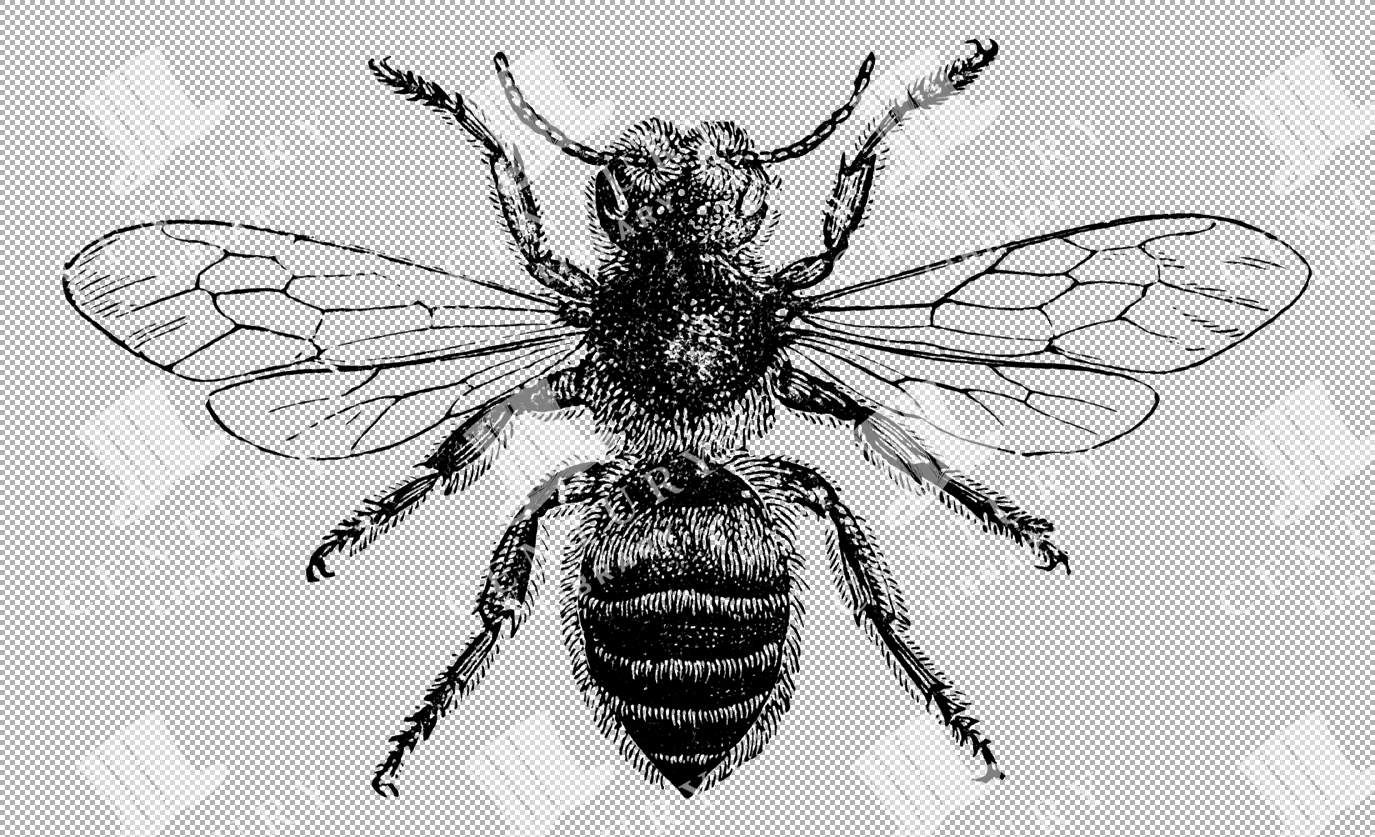

Common Leaf-Cutter Bee Detailed Wing Structure Illustration
This detailed illustration shows a common leaf-cutter bee, focusing on its intricate wing patterns and body structure. The sketch highlights the bee's segmented body, antennae, and legs, providing a close look at this vital pollinator in a precise artistic style.
- Resolution: 1825px x 1111px
- Image Type(s): PNG
- Agriculture
- Anatomy
- antennae
- Arachnid
- Art
- arthropod
- Artwork
- Beauty
- Bee
- biodiversity
- black
- Body
- close-up
- common
- detailed
- ecosystem
- Entomology
- environment
- fauna
- Flora
- Flying
- Garden
- Hive
- illustration
- Insect
- leaf-cutter
- leafcutter
- Legs
- natural
- Nature
- pollination
- pollinator
- scientific
- segmented
- sketch
- species
- Spider
- structure
- study
- white
- Wing
- Wings
Related Images
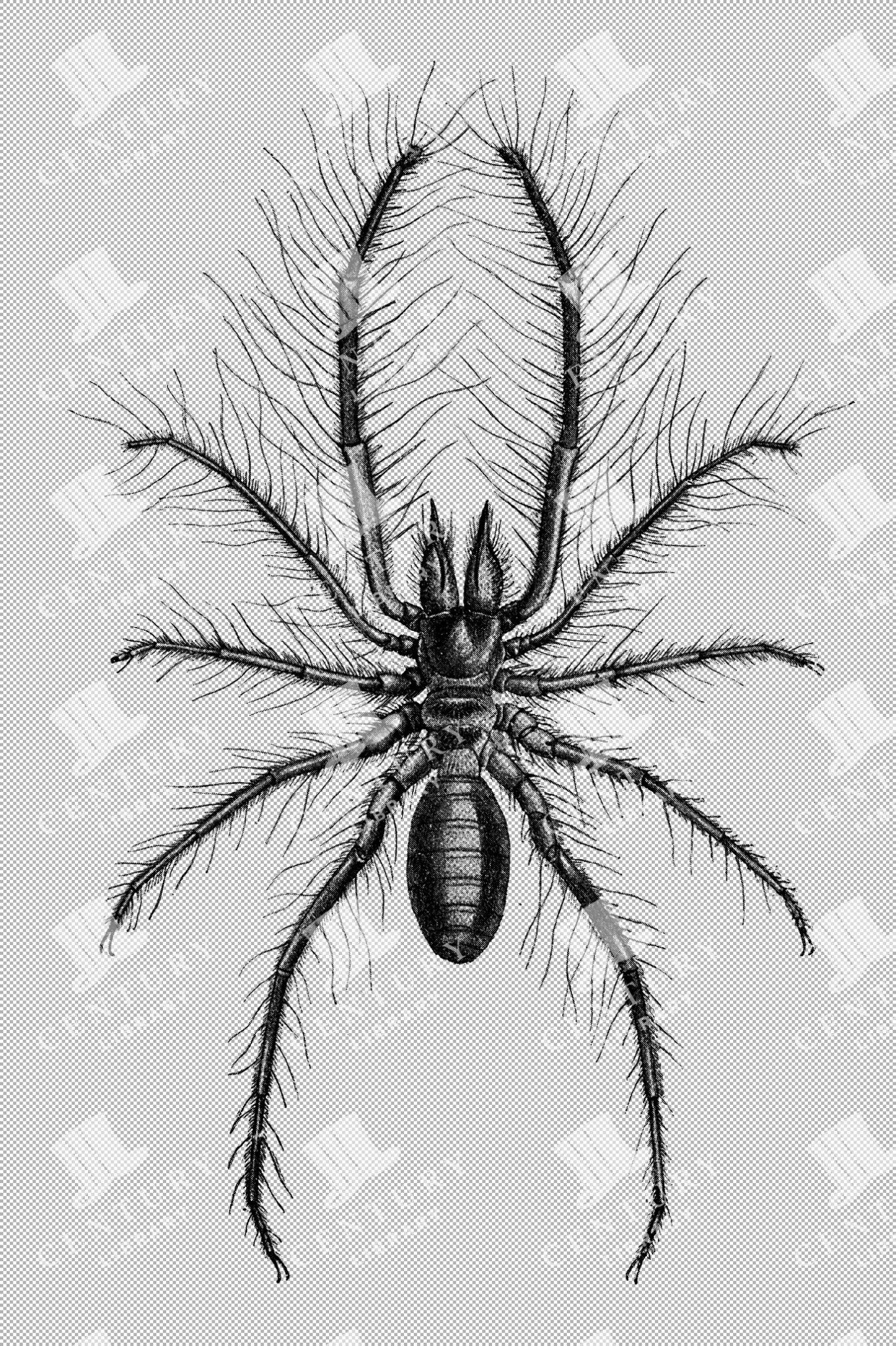

Vintage Illustration of Persian False Spider with Distinctive Hairy Legs as Transparent PNG
A vintage illustration of a Persian false spider, known for its distinctive hairy legs. This transparent PNG captures the spider's detailed anatomy, perfect for educational and entomology-themed projects.
- Resolution: 3785px x 5686px
- Image Type(s): PNG
Related Images
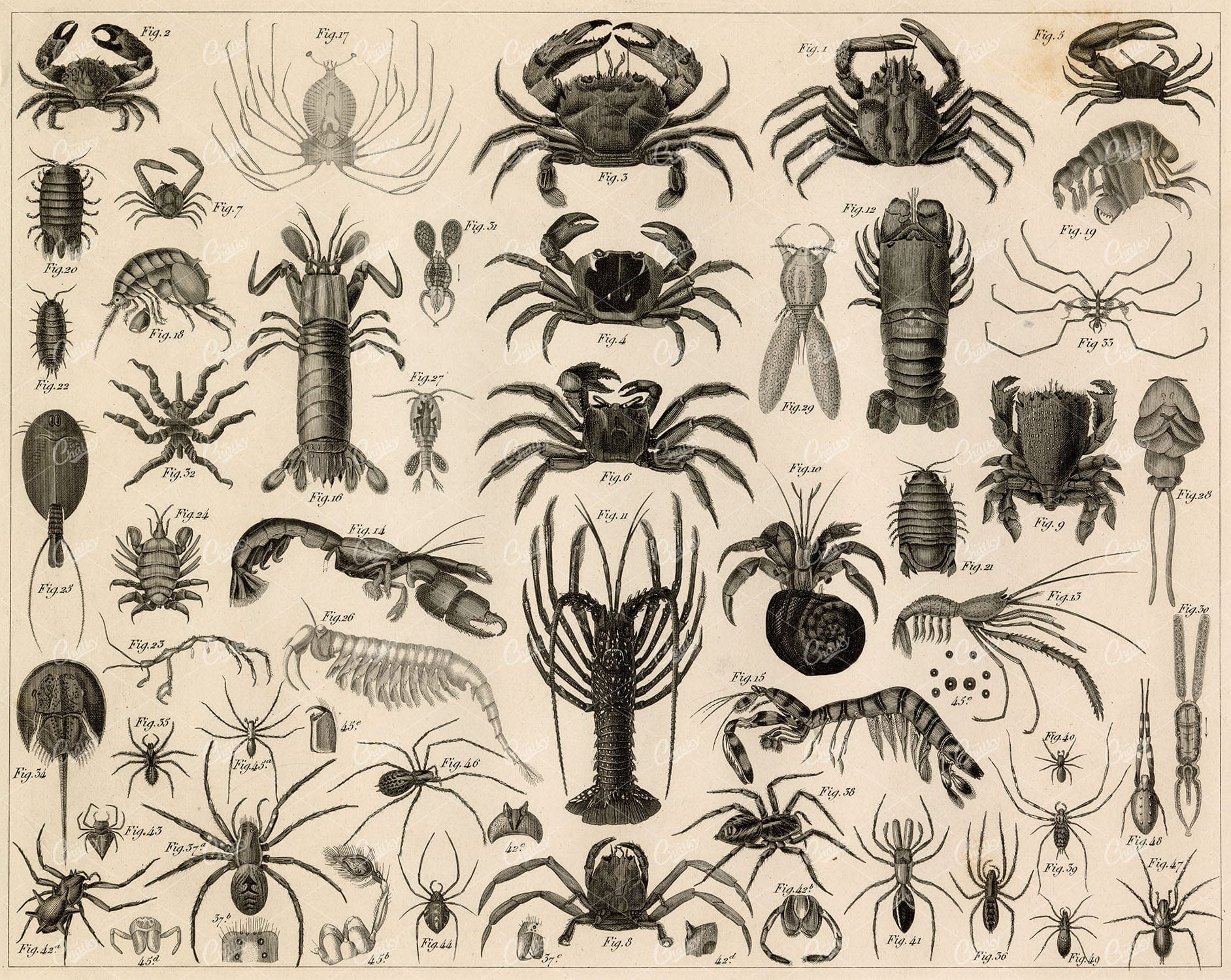

ZOOLOGY – Crabs, Lobster, Crustaceans, and Spiders – 1851 Antique Print
You’re looking at a well preserved original plate from Johann Georg Heck's “Iconographic Encyclopedia of Sciences, Literature and Art” published in 1851 by Rudolphe Garrigue in New York. We were extremely fortunate to acquire the full collection of illustrative prints from the series, which after many months of looking, proved to be very difficult!
- License Info
- Resolution: 9131 x 7270 300dpi
- Year of Print: 1851
- Artist: Johann Georg Heck
From this collection
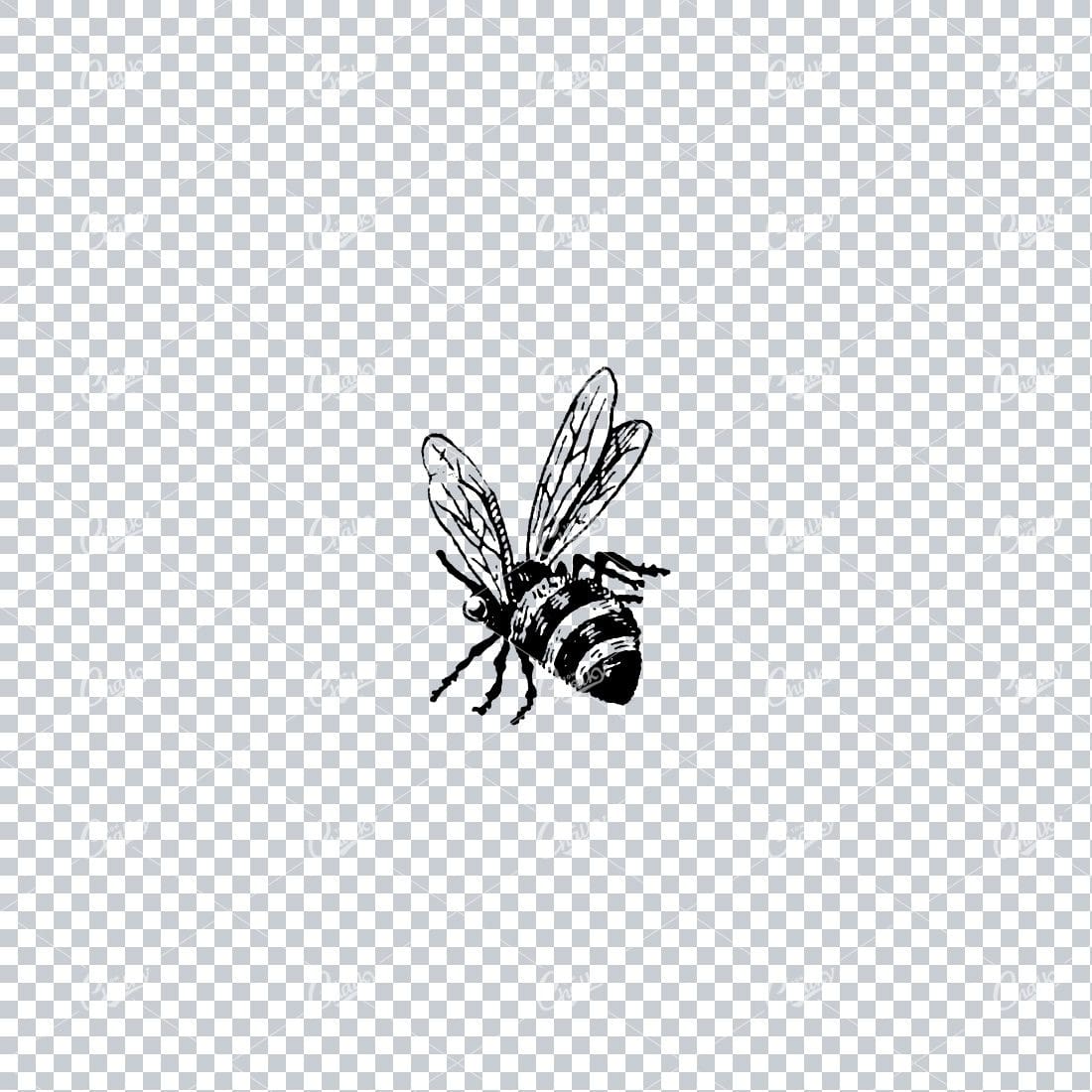

Vintage Line Art Illustration of a Bee No.1
- License Info
- Resolution: 252px x 362px
Related Images
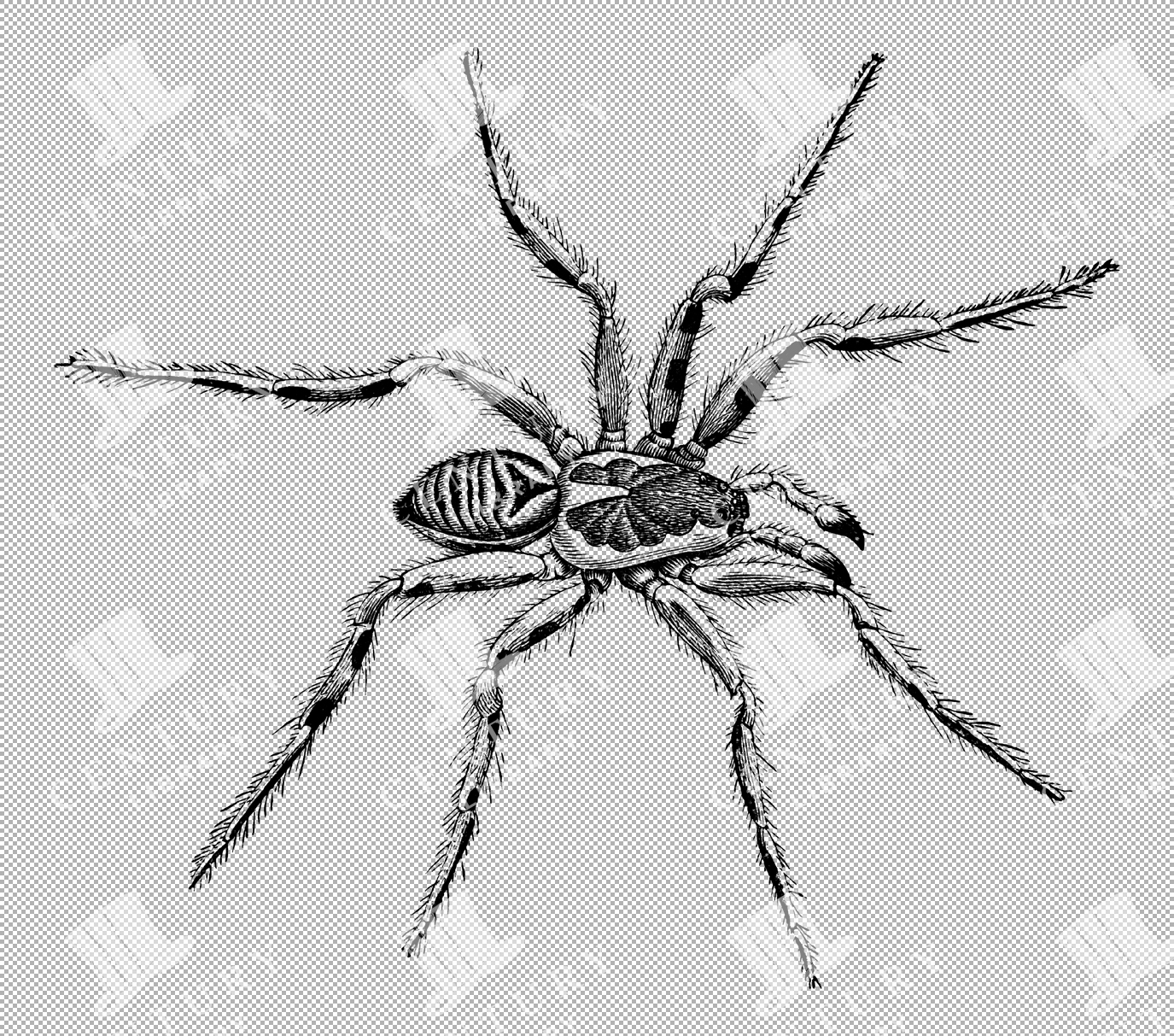

Vintage Above View Illustration of Italian Tarantula Spider with Detailed Features as Transparent PNG
A vintage above view illustration of an Italian tarantula spider, highlighting its detailed features. This transparent PNG captures the intricate patterns and textures, perfect for design, educational, and nature projects.
- Resolution: 2731px x 2409px
- Image Type(s): PNG
Related Images


Vintage Engraving – Line Art Illustration of an Insect No.8
- License Info
- Resolution: 1341px x 2882px
Related Images


Vintage Line Art Illustration of a Bee No.2
- License Info
- Resolution: 231px x 293px
Related Images
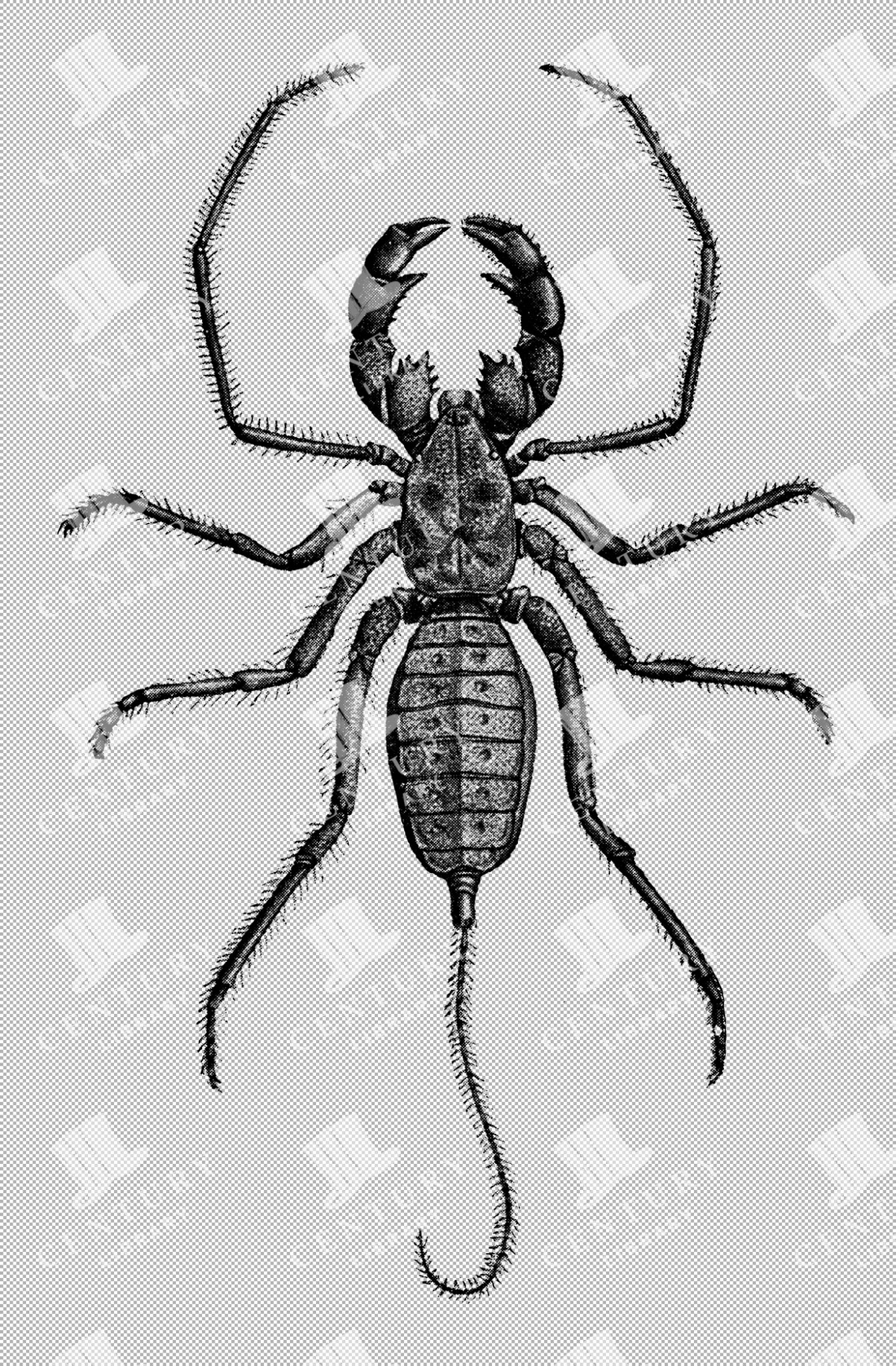

Antique Illustration of a Bornean Whip-Scorpion with Detailed Body Features from the 1800s
This vintage illustration from the 1800s showcases a Bornean whip-scorpion with detailed body features, highlighting its unique pincers and elongated tail.
- Resolution: 2738px x 4173px
- Image Type(s): PNG
Related Images
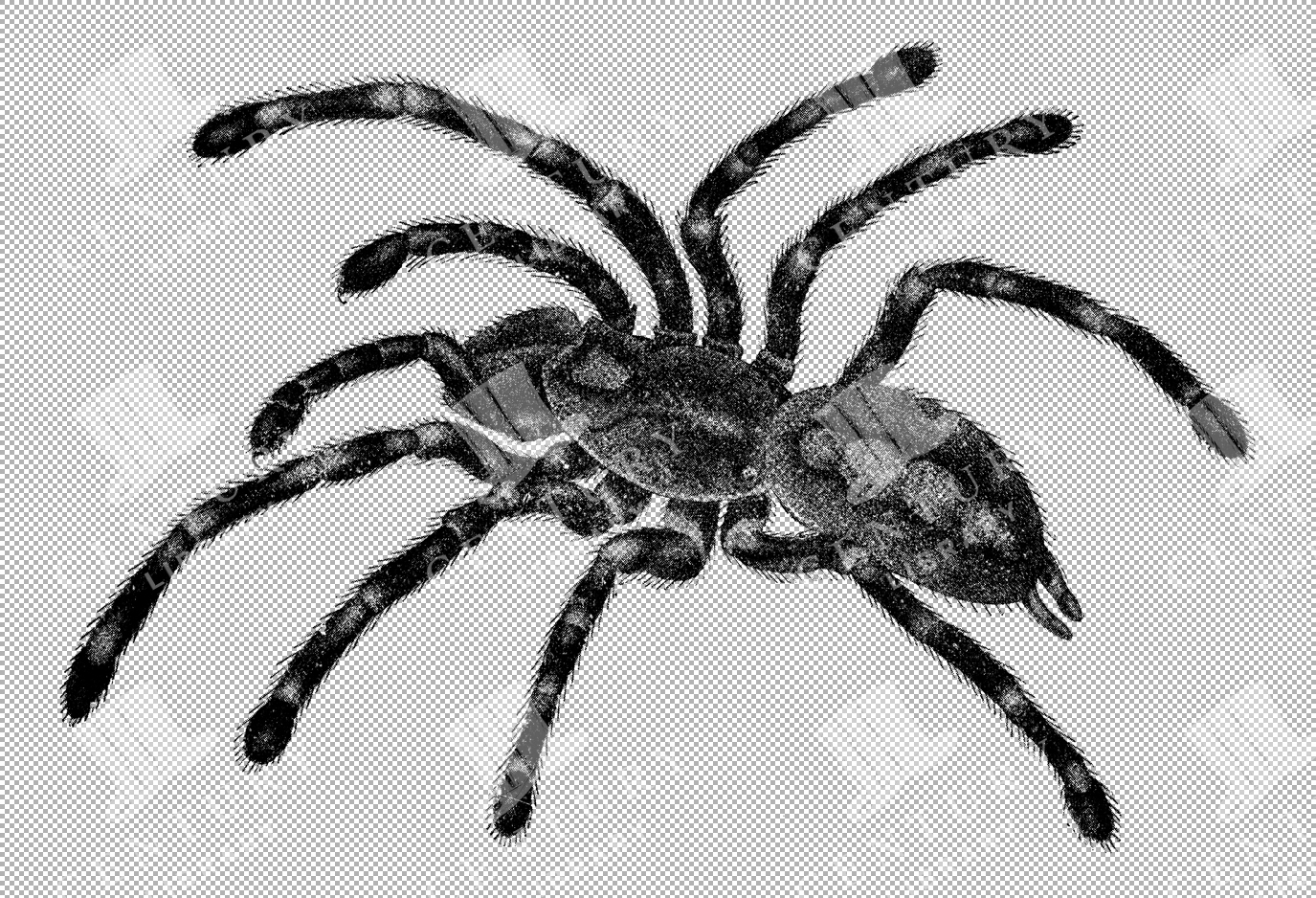

Detailed Vintage Illustration of a Bird-Eating Spider from the 1800s Natural History
This vintage illustration from the 1800s depicts a bird-eating spider with detailed anatomy, showcasing its large fangs and hairy legs, typical of species like tarantulas.
- Resolution: 4749px x 3242px
- Image Type(s): PNG
Related Images
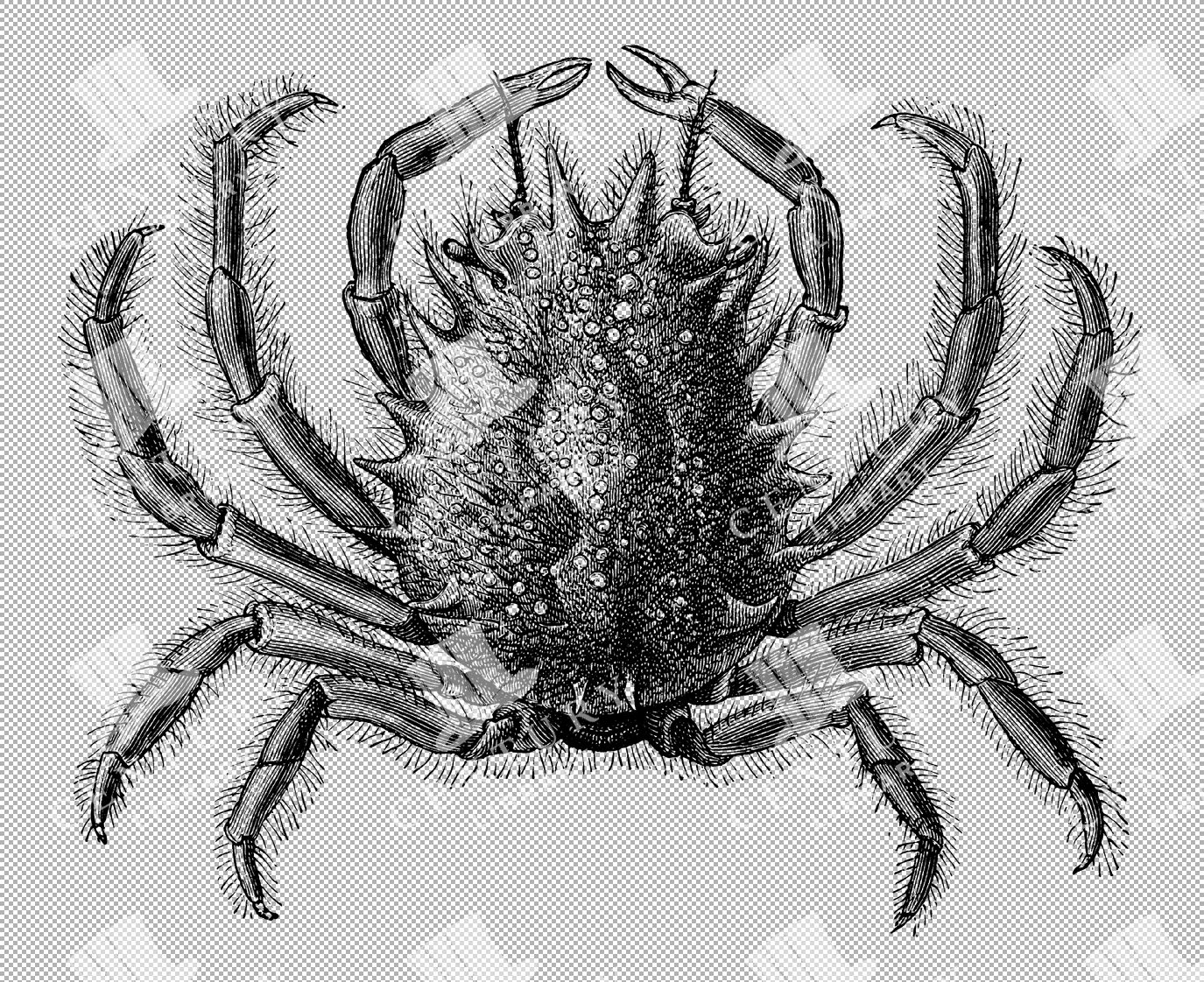

Thornback Crab Line Art in PNG Format
Thornback Crab line art illustration in PNG format, highlighting the spiny shell and detailed body structure of this marine species
- Resolution: 2899px x 2366px
- Image Type(s): PNG
Related Images
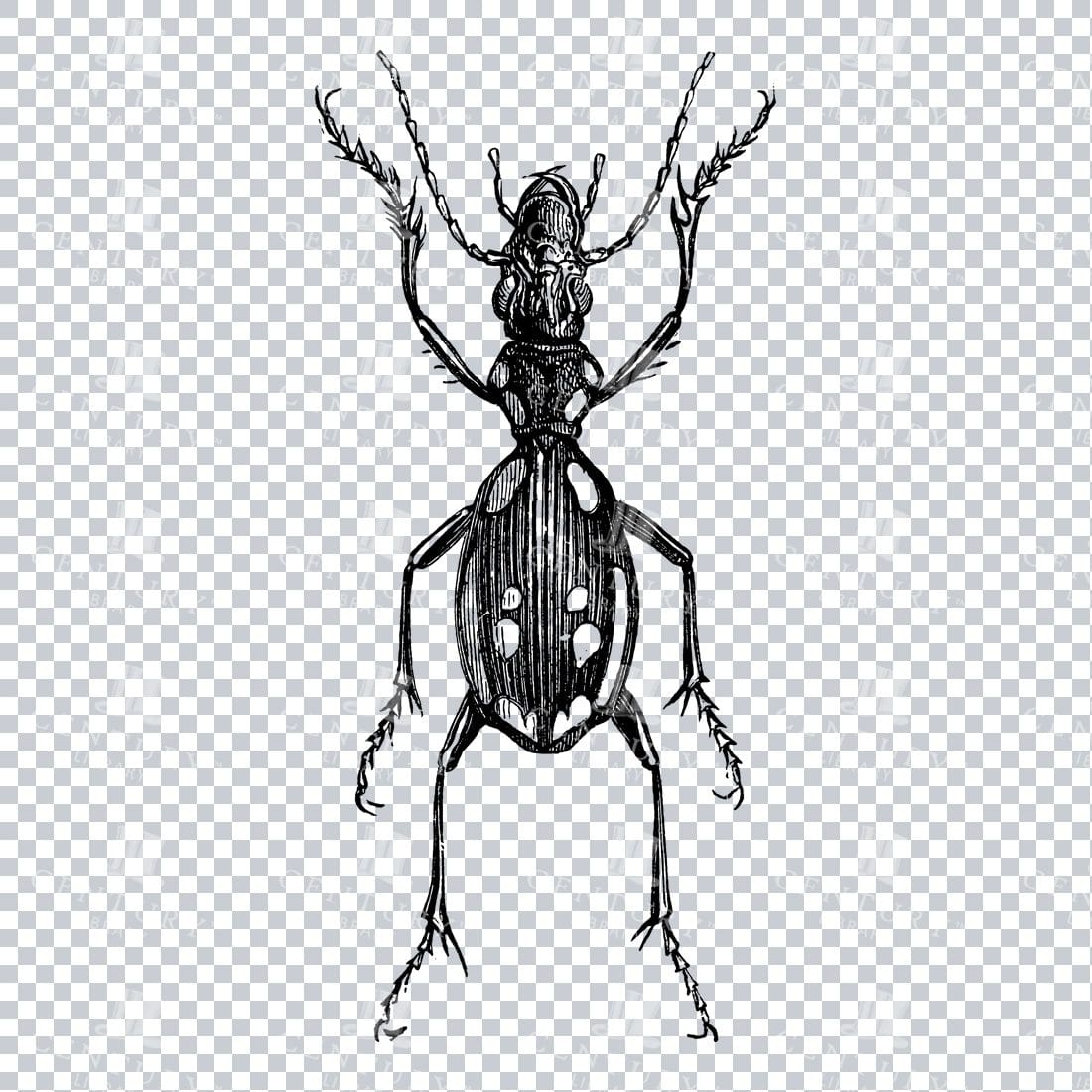

Vintage Engraving – Line Art Illustration of an Insect No.2
- License Info
- Resolution: 1341px x 2882px
Related Images


VINTAGE Print – Crabs, Spiders, etc – Antique Oken’s Naturgeschichte Print
Original Colour Vintage Print from Lorenz Okenfuss' 'Oken's Naturgeschichte' (Allgemeine Naturgeschichte für alle Stände), with illustrations by Johann Susemihl (1767-1847), and published in Stuttgart by Hoffman between 1839 and 1841. Lorenz Oken (1 August 1779 - 11 August 1851) was a German naturalist, botanist, biologist, and ornithologist. Oken was born Lorenz Okenfuss (German: Okenfuß) in Bohlsbach (now part of Offenburg), Ortenau, Baden, and studied natural history and medicine at the universities of Freiburg and Würzburg. He went on to the University of Göttingen, where he became a Privatdozent (unsalaried lecturer), and shortened his name to Oken. As Lorenz Oken, he published a small work entitled Grundriss der Naturphilosophie, der Theorie der Sinne, mit der darauf gegründeten Classification der Thiere (1802). This was the first of a series of works which established him as a leader of the movement of "Naturphilosophie" in Germany.
- License Info
- Resolution: 9500 x 11800 300dpi
- Year of Print: 1836
- Artist: Lorenz Oken
- Image Type(s): JPG
From this collection


Vintage Line Art Illustration of a Stags Head inside Wreath
- License Info
- Resolution: 1132px x 1237px
Related Images
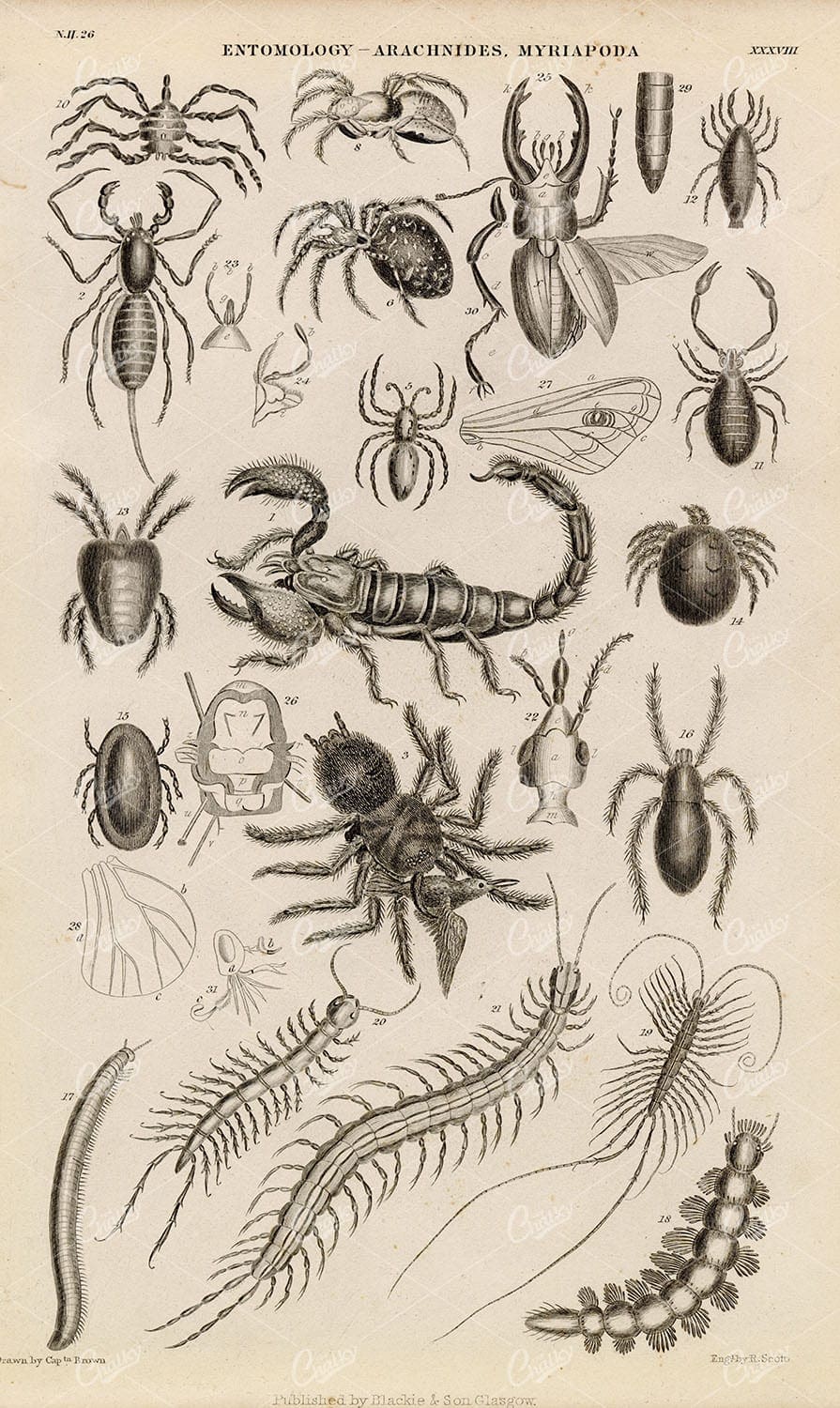

ANTIQUE Original 1858 Engraving – Entomology, Arachnides, Myriapoda
Here we have a high resolution scan of a wonderful lithograph print from Oliver Goldsmith's "A History of the Earth and Animated Nature". A celebrated series of books from the 1860's, wherein the most distinguished British and Foreign naturalists collaborated to produce.
- License Info
- Resolution: 5120 x 8580 300dpi
- Year of Print: 1868
- Artist: Oliver Goldsmith
From this collection
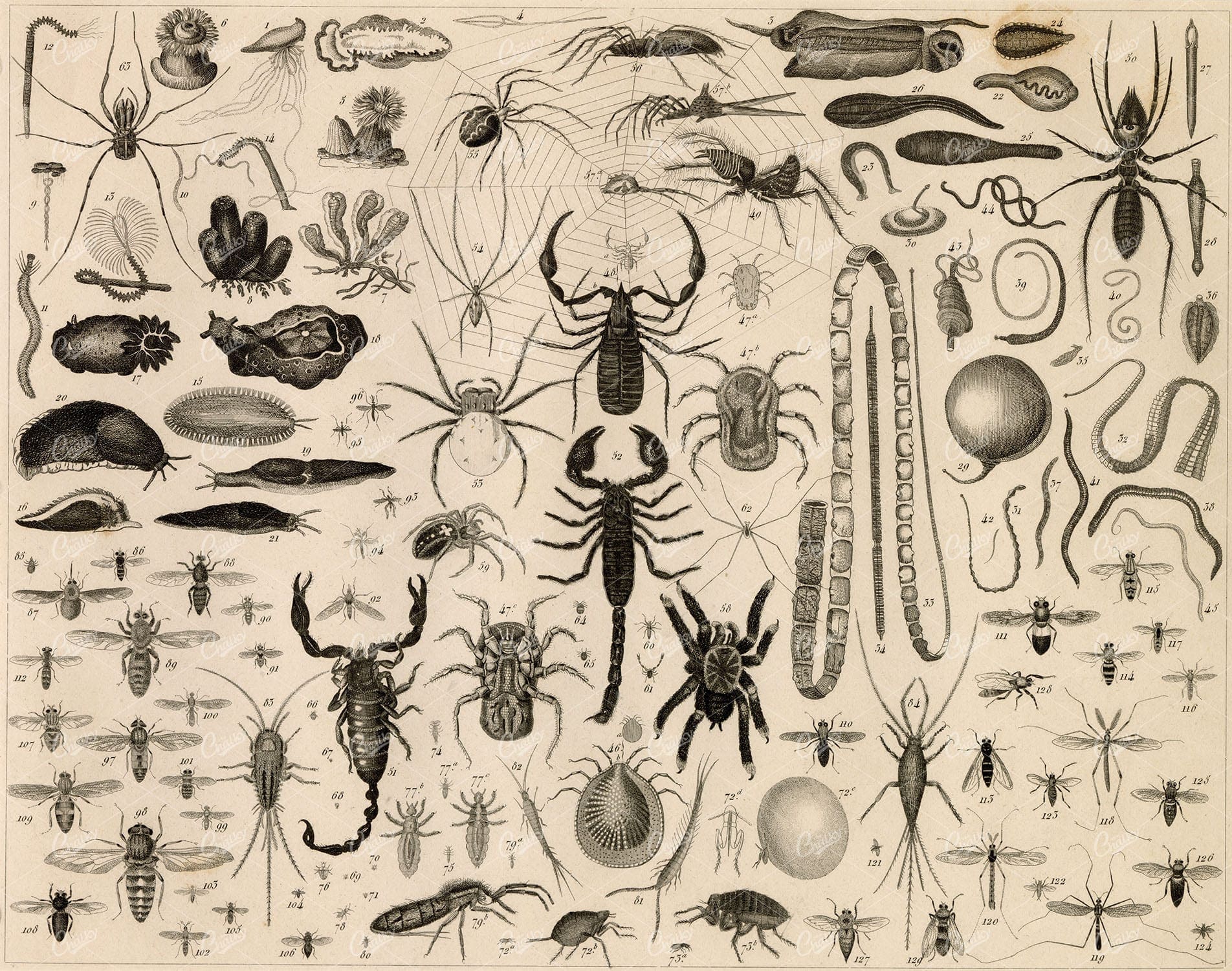

ZOOLOGY – Insects, Scorpion, Spider, Bee, Wasp, Flea – 1851 Heck Print
You’re looking at a well preserved original plate from Johann Georg Heck's “Iconographic Encyclopedia of Sciences, Literature and Art” published in 1851 by Rudolphe Garrigue in New York. We were extremely fortunate to acquire the full collection of illustrative prints from the series, which after many months of looking, proved to be very difficult!
- License Info
- Resolution: 9114 x 7180 300dpi
- Year of Print: 1851
- Artist: Johann Georg Heck
From this collection
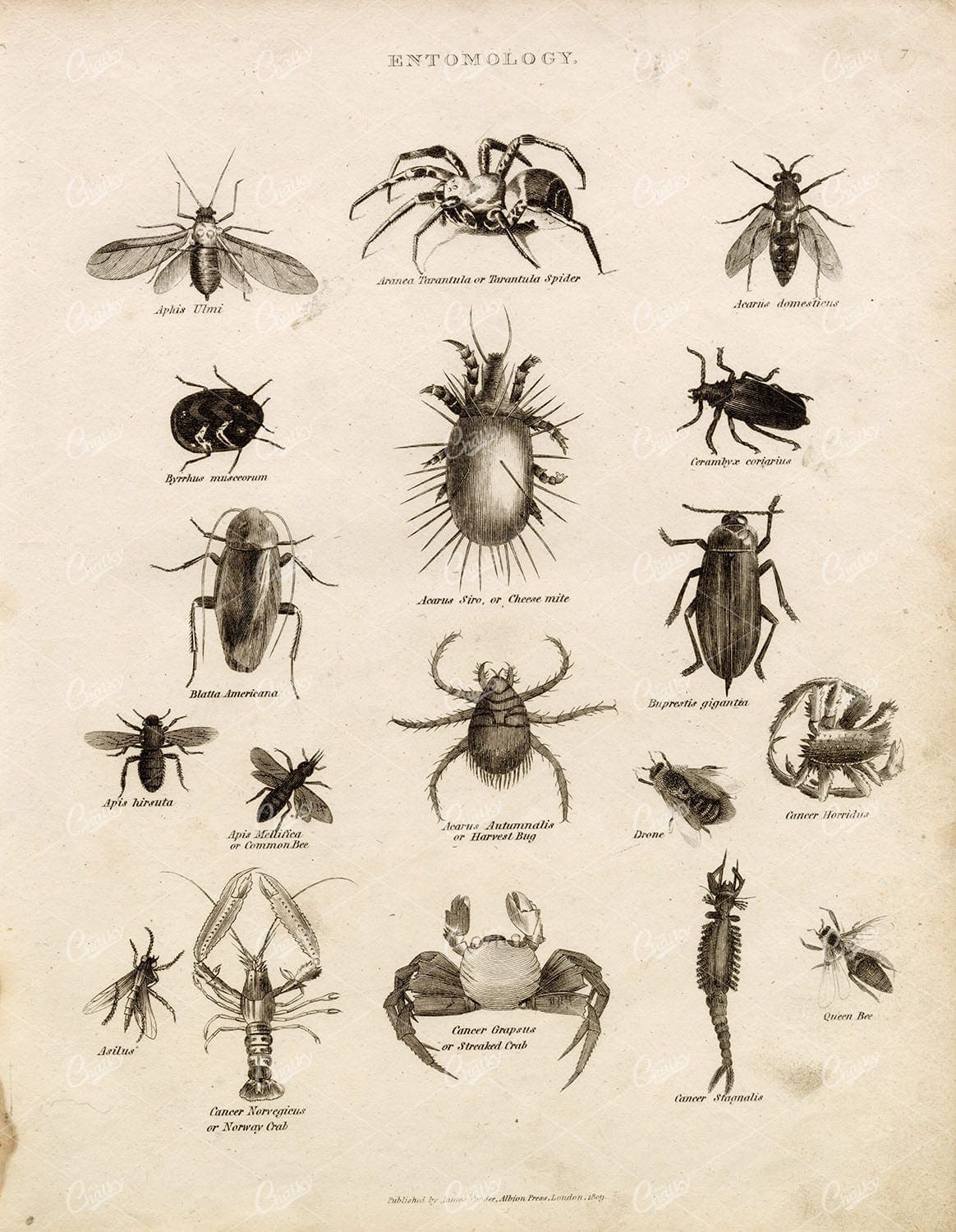

ANTIQUE Entomology Print – Tarantula, Cheese Mite, Bee, Crab, Queen Bee
You're looking at an Original pre-1820's Antique Engraving from a rare copy of Abraham Rees' "The Cyclopaedia; or, UNIVERSAL DICTIONARY OF ARTS, SCIENCES, and LITERATURE" (Published 1820 by Longman, Hurst, Rees, Orme)
- License Info
- Resolution: 7400 x 9350 300dpi
- Year of Print: 1800s
- Artist: Abraham Rees
From this collection
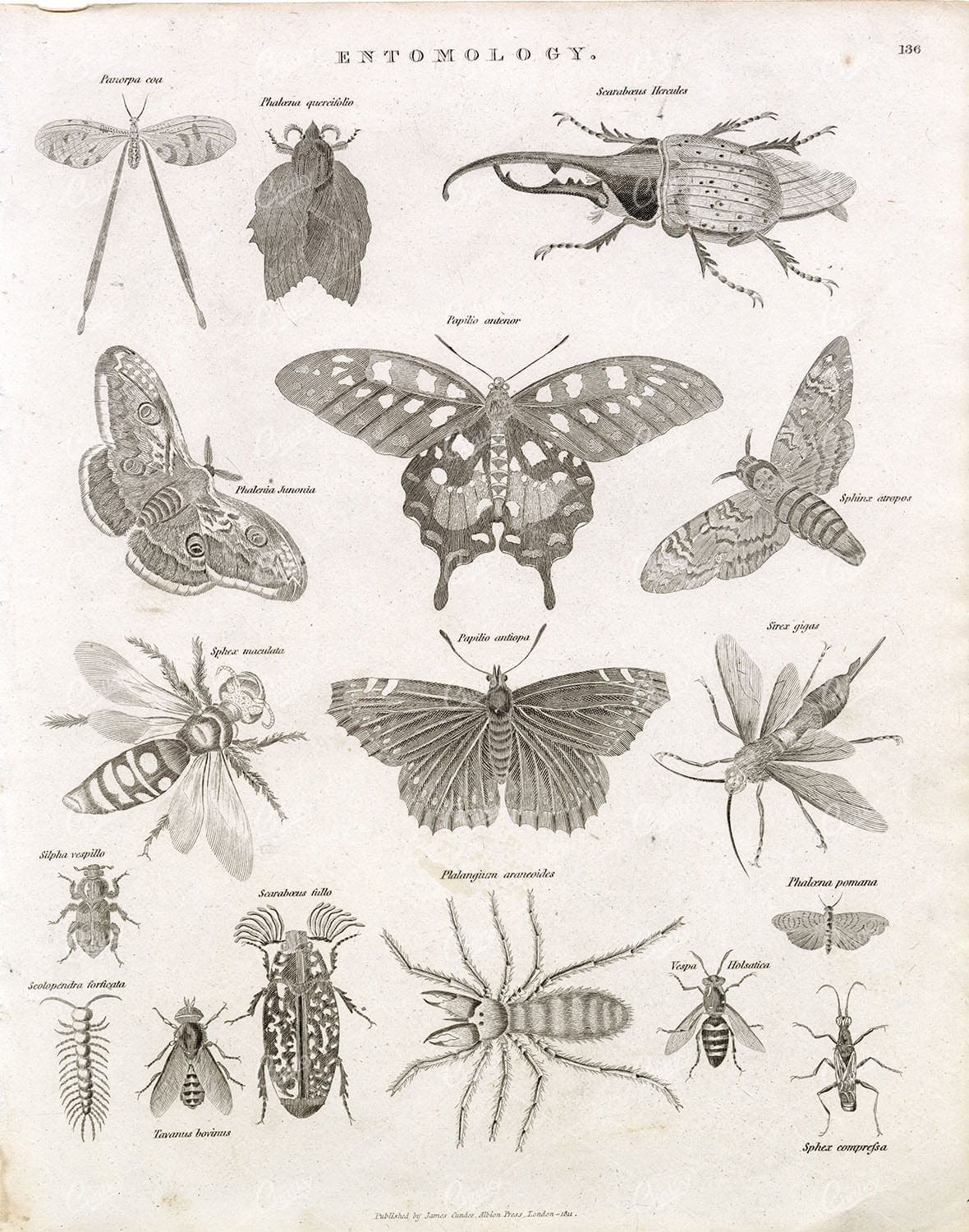

ENTOMOLOGY – Antique Insects Print – Abraham REES Encyclopaedia
You're looking at an Original pre-1820's Antique Engraving from a rare copy of Abraham Rees' "The Cyclopaedia; or, UNIVERSAL DICTIONARY OF ARTS, SCIENCES, and LITERATURE" (Published 1820 by Longman, Hurst, Rees, Orme)
- License Info
- Resolution: 7400 x 9350 300dpi
- Year of Print: 1800s
- Artist: Abraham Rees
From this collection
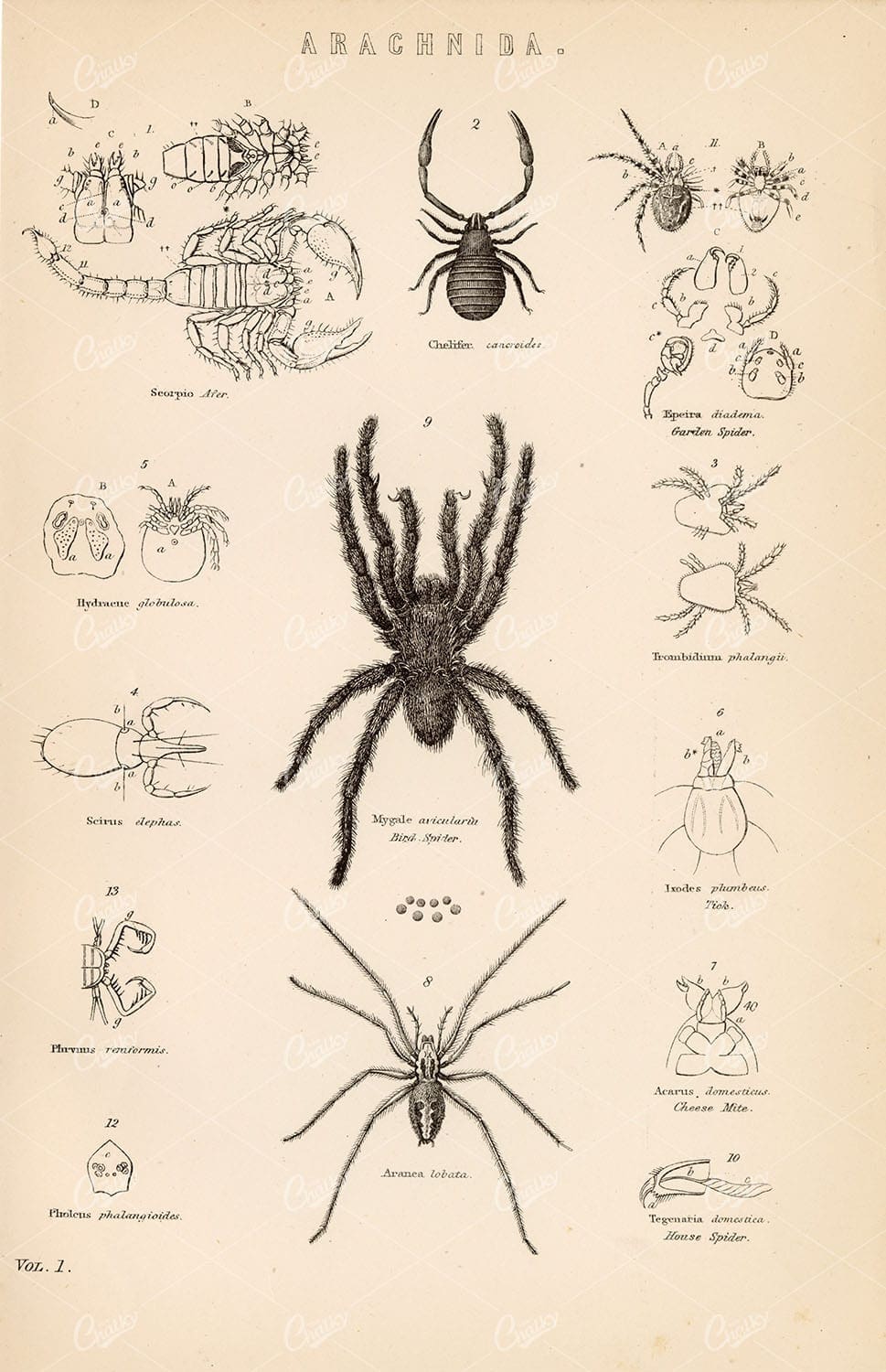

ARACHNIDA Various Arthropods. Bird Spider, Scorpio. 1880 Print
An original Antique Plate scan from the National Encyclopaedia: A Dictionary of Universal Knowledge. Published by William Mackenzie in 1880. Click on the Artist's name to see the full collection from this series!
- License Info
- Resolution: 5500 x 8600 300dpi
- Year of Print: 1880
- Artist: William Mackenzie
From this collection
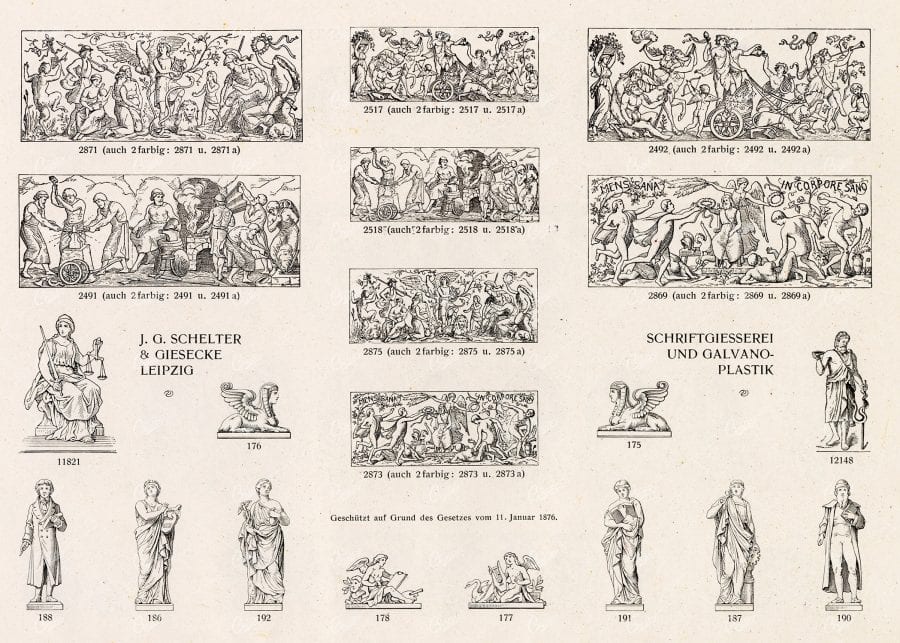
Support the Library
Our supporters and members help us continue collecting and restoring these wonderful pieces of art for the modern creator
Unlock Everything and Become a Member!
While a lot of the library is available for free, some is kept behind closed dusty doors only to be accessed by our lovely members.
